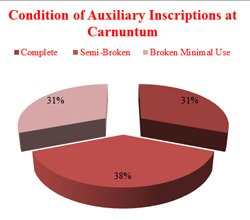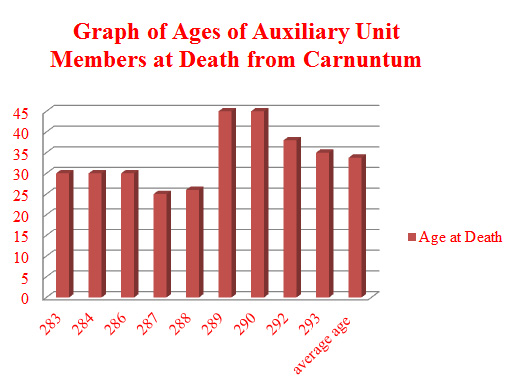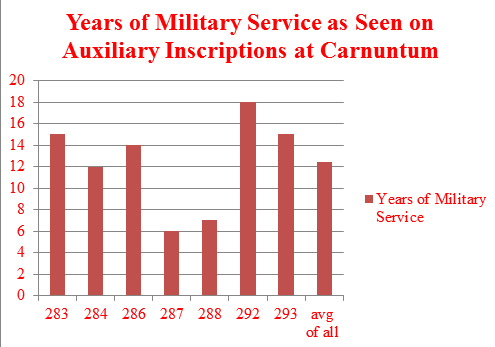Carnuntum and Epigraphy
Auxilary UnitsThe available inscriptions offer little definitive information about auxiliary units at Carnuntum. There are only 13 inscriptions available and almost one third are damaged to the point that little information can be derived from them. That being said, some projections can be made about the activities of these units and their activities in and around Carnuntum.
The above is the order in which different auxiliary units occupied auxiliary fort at Carnuntum. There was some overlap between the last 4 units stationed at Carnuntum, the degree of which is estimated in the timeline. From each unit we have one inscription from what we believe Ala I Hispanorum Aravacorum, two from Tungrorum Frontoniana, and one from ala Thracum Victrix. Four inscriptions indicate that the deceased was from a unit that did not appear in the timeline, and four inscriptions are damaged and the unit the soldier belonged to cannot be determined.
Two inscriptions indicate that the soldiers entombed belonged to Cohors V Breucorum. The Breuci were the southern most tribe in Pannonia and the Breucorum auxiliary unit was most likely raised from a combination of the Breuci and the Colapiani.2 Unfortunately, Cohors V is a unit we know very little about, and this is due to a general lack of information about Cohors Breucorum in general. However, there is speculation that Cohors I Breucorum was originally raised and sent to Germania in response to a revolt in AD 9.3 Another inscription indicates the presence of Cohors Italica, an archer corps, as well. Some historians believe this unit was raised after the Pannonian revolt of AD 6 and was stationed at Dalmatia.4 Other units that appear in the inscriptions but do not appear to have occupied the fort are XVIII cohort Voluntariorum, and Cohors Ulpia Pannoniorum. As can be seen with Figure 3, on average the Auxiliary unit members serving at Carnuntum died at younger ages than other units serving at this fort. The average age at death for an auxiliary member serving at Carnuntum is approximately 34 years of age at death whereas compared to the Legio XIV Gemina Martia Victrix whose unit members on average died at the approximate age of 40 years old.
Figure 4 illustrates how that the members of auxiliary unit members serving at Carnuntum served for a shorter period of time than military personnel serving in other units stationed at this particular fort. The mean years of service at death for an auxiliary member who served at Carnuntum is approximately 12 years whereas, the approximate years of service for members of the Legio XIV Gemina Martia Victrix that served for around 15.5 years of service. If you would like to read more about the auxilary units at Carnuntum, Andrew Nuckolls and Phil Hatcher's paper on the subject can be downloaded here |



